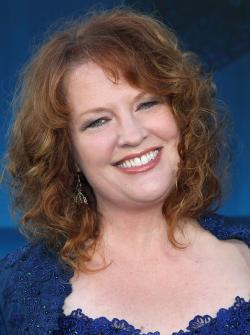Actors and writers in Hollywood generally dodge direct questions about the role that race or gender have played in their careers, so it’s decidedly refreshing to hear Brenda Chapman, the creative force behind Brave, address the issue head-on. “We need a woman. And you’re the right price,” she says she was told by the Disney higher-up who hired her in 1987.
Despite that jarring sound bite, Chapman writes about her experience as the first woman working in Disney Animation’s story department as a largely a positive one. Rather than isolating her, Chapman’s male colleagues treated her hiring as a more important crack in the glass ceiling than even she was inclined to do. And her impact on the team was more than just symbolic. “I think by just having my presence in the room, and because we had such a mutual respect for each other, the men were more aware of what might be condescending, or to put it bluntly, ‘sexist’ toward women in their work,” she writes. “We all seemed to work together trying to move the Disney fairy tale into a more contemporary point of view for the heroines—and the audience.”
Chapman’s story is a striking counterpoint to the conventional Hollywood wisdom that a raunchy environment is a necessary condition for strong creative work. When Amaani Lyle, an assistant to the writers’ room on Friends, sued Warner Bros. over alleged sexual harassment on the job, the defendants successfully argued that crude conversations about sex and women’s bodies were a critical part of the creative process. Lyle’s defeat cemented a sense that writers had not just the latitude but the right to be crude, and that women (or men) who wanted to work in a less hostile environment had few remedies available to them, other than getting out of the business. Chapman’s story is a valuable reminder that these frat houses aren’t required for good work to happen.
But her reflections also point to obvious limitations on how far Disney was willing to let Chapman and her colleagues stretch its story formula. “I was a little disappointed that we had to give a happy ending to The Little Mermaid,” Chapman writes. “But hey, it’s Disney. What do you want? Sea foam?” She counts among the team’s victories giving Ariel a broader-based interest in human society, rather than keeping a laser focus on Prince Eric, and Belle’s courage in rescuing her father, and ultimately the Beast, in Beauty and the Beast. In other words, the characters could change—damsels could be responsible for getting themselves out of distress—but the stories still had to end the same way: with true love, unclouded by doubt or tragedy.
And when Chapman finally got a chance to break out of that mold, to tell a story that ended with a girl delaying the prospect of marriage, she ultimately ended up ceding control of her own story. Brave was Chapman’s idea, and she was set to direct it, an appointment that would have made her another first—Pixar has never had one of its feature films directed by a woman. But she was ultimately replaced by her Pixar coworker Mark Andrews, who got to helm the story of Merida, the Scottish princess who works her way out of an arranged marriage. Women, it seems, may change the way men think about fairy tales. But men still get to be in charge of the final draft.
